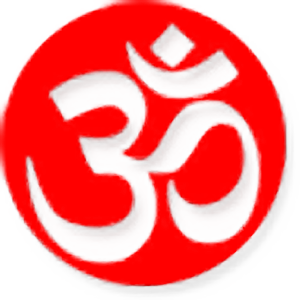
Everyone (reading this blog!) has heard of the syllable ‘OM’. The Devanagari for this is the immediately recognizable ॐ but it is made up of three letters, a, u and m. Thus, it could actually be represented as औम् and the ITRANS, instead of being written OM, would be ‘aum’.
How OM can function as a symbol for brahman or the entirety of creation is elucidated by Gaudapada and described in my book ‘A-U-M: Awakening to Reality’. Here is the section that describes the Sanskrit aspects:
*****
The spoken word ‘OM’ is actually Sanskrit. The written ‘OM’ is its ‘Romanized’ representation (i.e. using the English alphabet). In its original language, it actually looks like this:
ॐ
If you have ever been to India, this character will be very familiar and it also frequently appears on New Age items and jewelry. But this is in fact a special, shorthand representation and the word is actually formed from three separate letters. (Only this word, in the entire language, has a special symbol – this is an indication of how important it is considered to be.)
Sanskrit is an incredibly logical language and this begins with the alphabet itself. Letters are formed in a very consistent, stepwise manner founded upon the way in which sound is initially made by the vocal chords and subsequently modified by the throat, mouth, tongue and lips. If you open your mouth and cause the vocal chords to operate very briefly without any interference, the most basic sound of all emerges. It sounds like ‘uh’ and it is this sound that is molded by the rest of the vocal apparatus to make every other sound, letter and word. This basic sound is the first Sanskrit vowel, represented in English as ‘a’. In the Sanskrit script (which is called Devanagari), it is written as:
अ
If you now make this basic ‘a’ sound and allow it to continue sounding as you move the tongue in the mouth, various other Sanskrit vowel sounds are formed. Eventually, dropping the tongue down and closing the lips to make a circle, the sound that is now made is a short ‘oo’, as in ‘soot’ or ‘cut’. (If the sound is prolonged, it becomes more like the ‘oo’ in ‘moon’ but this is effectively another vowel – in Sanskrit, the duration of the sound is critical). This vowel is written ‘u’ in English or, in Devanagari:
उ
Finally, if you (attempt to) continue to make the basic sound but close the lips altogether, the sound is effectively cut off and just a ‘mm’ sound is made. This is not a vowel but a consonant, in Sanskrit. It is written ‘m’ in English or, in Devanagari:
म्
(As noted above, all sounds have to incorporate the basic ‘a’ or there would be no sound at all. Accordingly, when the alphabet is spoken, ‘a’ is always added to the consonant sound. Therefore the ‘m’ consonant is actually spoken as ‘ma’ and would be written म. Since we want to use the ‘m’ sound without any ‘a’ appended, we have to use the ‘tail’ sign on the letter to indicate that the ‘a’ must be omitted.)
So, we have introduced the three letters ‘a’, ‘u’ and ‘m’. It is these three letters which together make the word OM, which really ought to be written ‘aum’. The ‘a’ and ‘u’ letters, when sounded together, make the sound ‘o’.
*****
But none of this actually addresses any ‘meaning’ for the word – and I must confess that I had not been aware that there actually was any, in the usually understood sense of having derivations from more basic ‘proper’ words. But apparently I was wrong!
The verb av means ‘to promote, favor’, ‘to offer (as a hymn to the gods)’, ‘(said of the gods) to be pleased with, accept favorably (as sacrifices, prayers or hymns)’, ‘(said of kings etc) to guard, defend protect’. To turn this into the word meaning ‘the one who’ promotes, favors, is pleased with, guards, protects, etc, you add the affix man to the verb so that it becomes avman – the one who protects.
But, as you may know, when two words join together, things often happen to the letters at the end of the first word and the beginning of the second – according to the many rules of so-called saMdhi.
Thus, the first thing that happens here is that the semi-vowel ‘v‘ becomes the vowel ‘u‘ and the word metamorphoses into auman. This is pronounced ‘oman’ so we are already becoming close to OM. But then a further rule from Panini’s takes effect and the last syllable ‘an’ is dropped, leaving just aum or OM. Thus it is that the word can actually be taken to mean ‘protector’.
As the Mandukya, first mantra, points out, however, OM is everything:
This word OM is all this. It is to be interpreted as past, present and future – everything is OM alone. And if there is anything other than these three, that too is OM.
